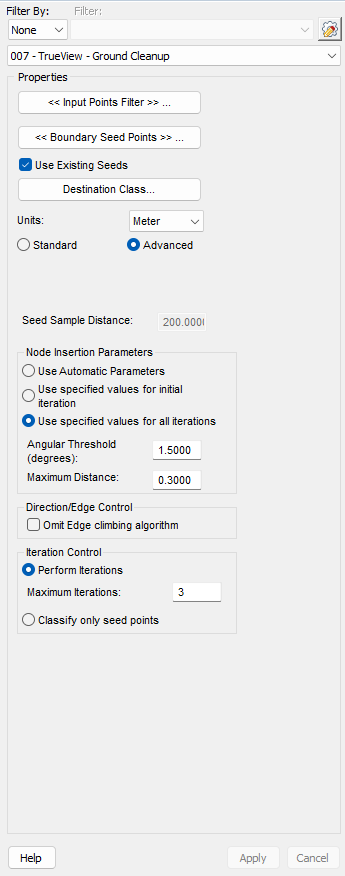After LIDAR data has been collected and delivered to the processing office one of the first steps, after quality control and calibration, is to run classification routines on the data. There are multiple classification routines, which may be used depending upon the final delivery results of the data, however generally a ground classification routine is always run.
The adaptive TIN ground filter is designed to classify a ground surface from the LIDAR data. Depending upon the parameters used during the classification process, as well as the LIDAR itself, it is possible that there will be patches of ground surface that do not end up being classified. Usually features with sharp elevation changes. Some common examples of missing ground classification includes: earthen berms, cliff sides/tops, hilltops, elevated road surface.
For additional information, please see the Ground Cleanup Filter Point Cloud Task WebHelp page.
Read Complete Article: Cleaning up Ground Classification
